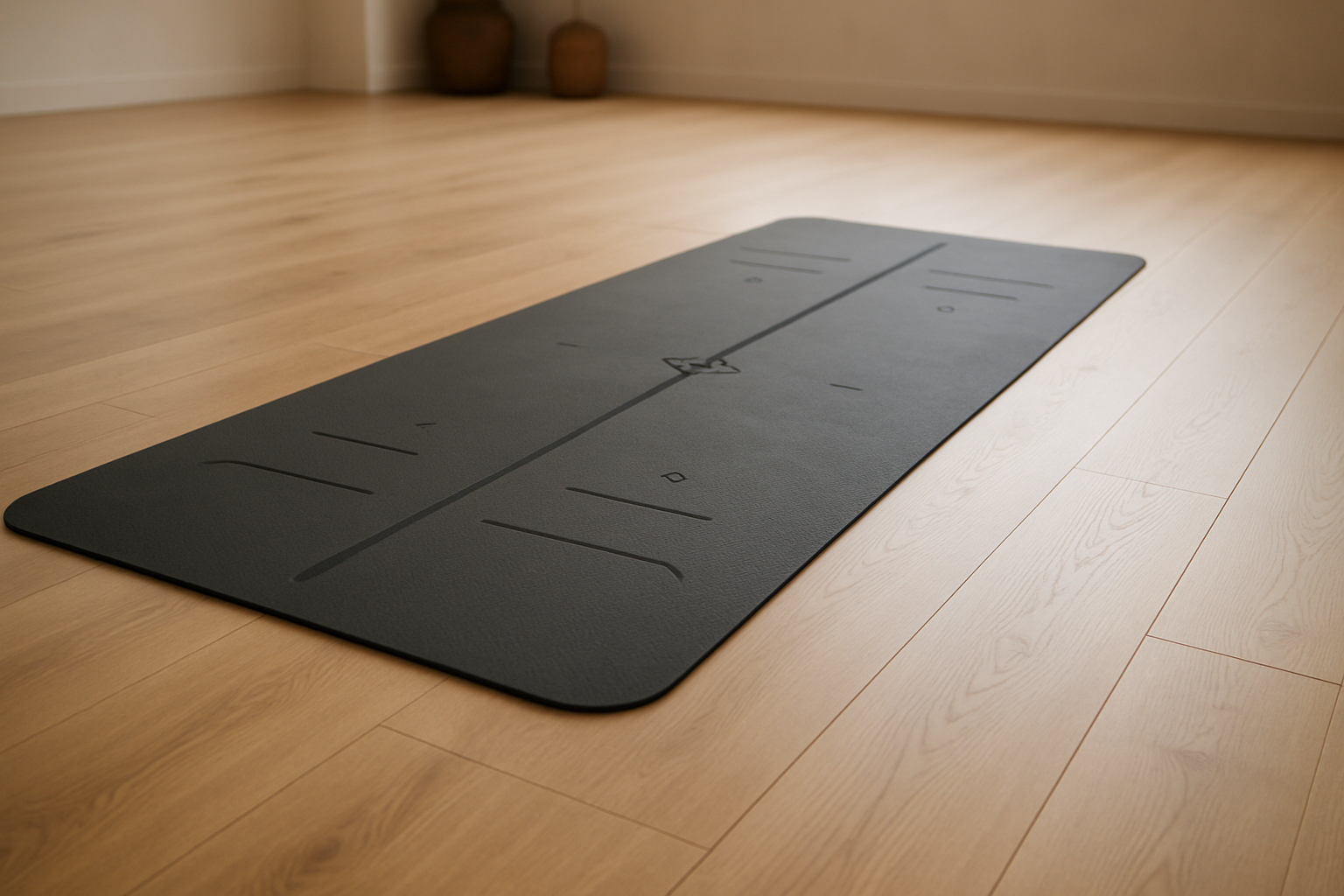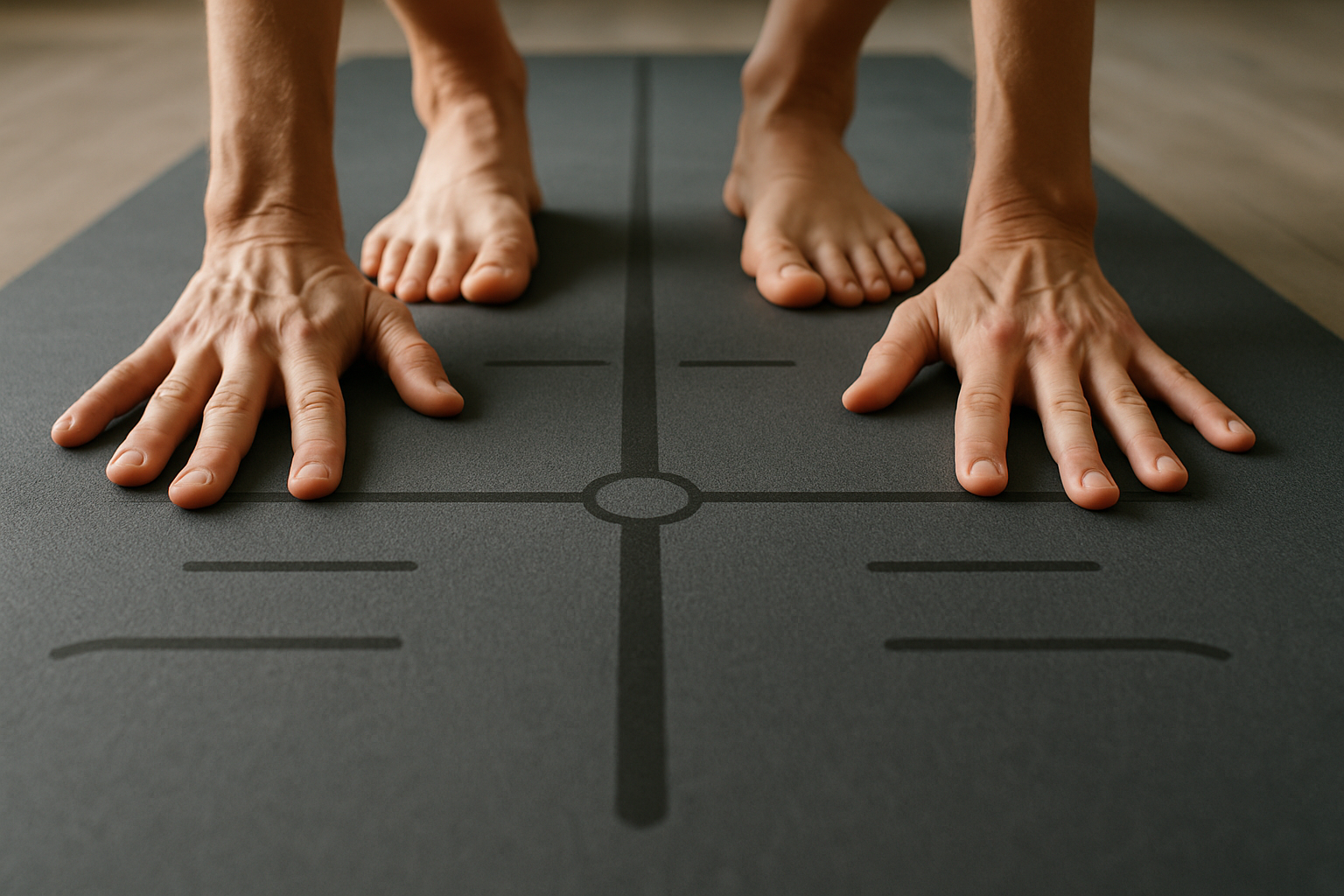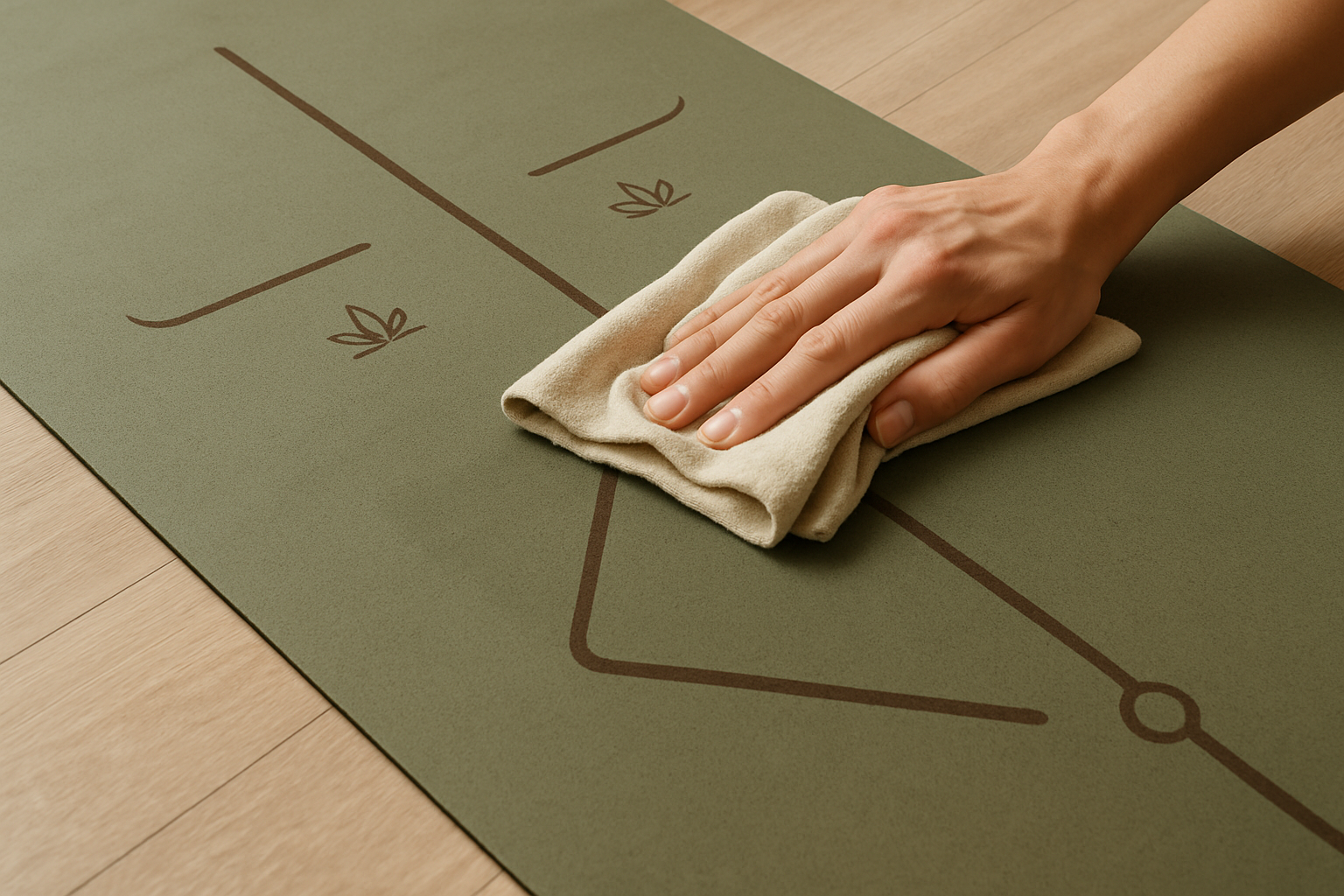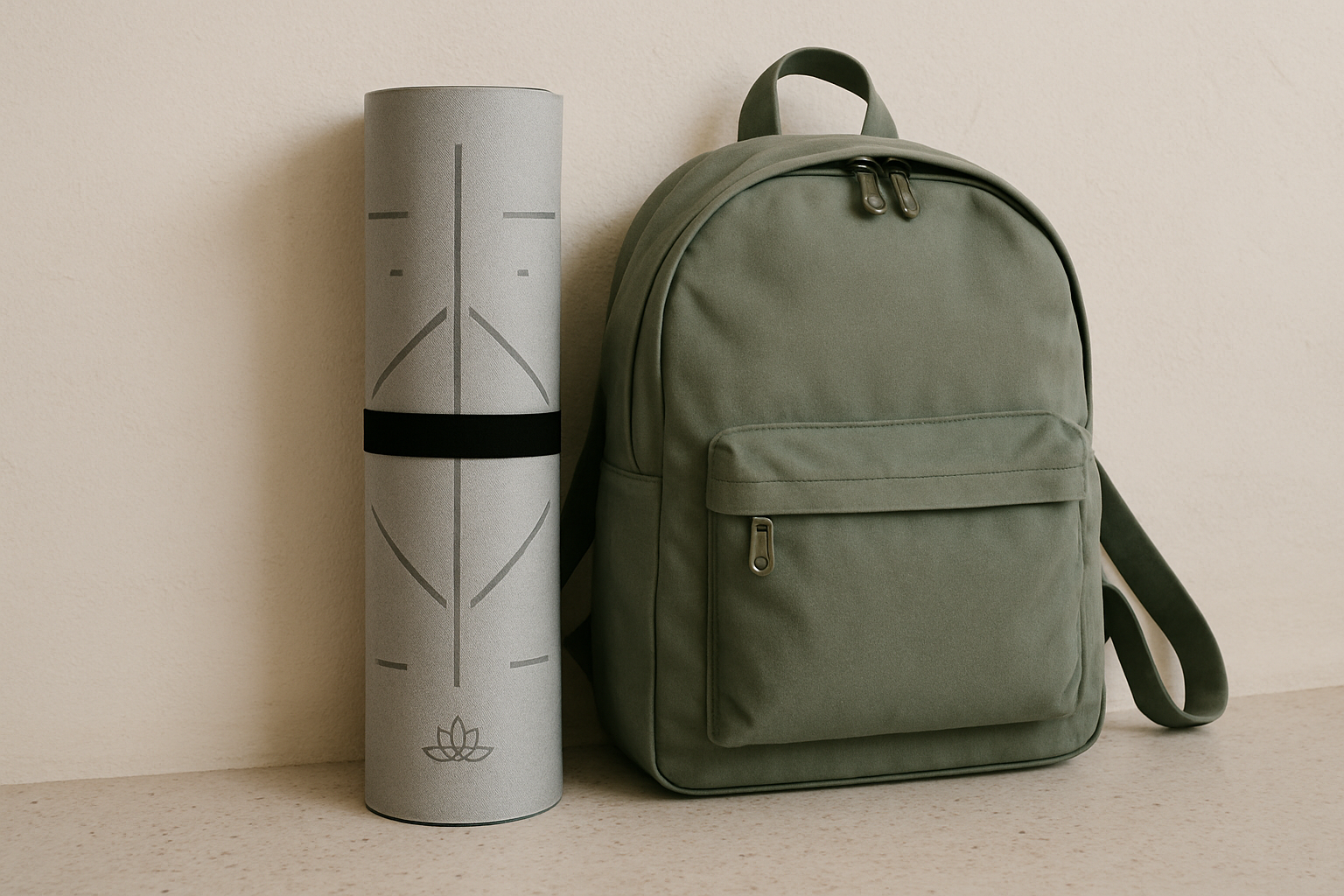TL;DR: A non-slip yoga mat with alignment lines dramatically improves grip and posture in yoga practice. This detailed guide covers the best features, benefits, and choices for all skill levels.
Everyone knows yoga mats are essential for a safe, comfortable, and effective yoga session.
But what makes a non-slip yoga mat with alignment lines stand out?
Here's a complete cheatsheet to help you choose and utilise these mats for a better practice.
Some are designed with biodegradable and eco-friendly materials.
Some guide your hands and feet for perfect posture each pose.
Some prevent slipping even during the sweatiest sessions.
Some might distract more than assist depending on your style.
Some come in versatile sizes suitable for travel or home sessions.
Let's dive right in.
Why Choose a Non-Slip Yoga Mat with Alignment Lines?
Yoga is more than exercise—it's a form of mindfulness and body awareness. A quality yoga mat shapes this experience.
A non-slip yoga mat with alignment lines offers two vital advantages: superior grip and posture guidance.
Grip is paramount for stability in poses. A mat that slips compromises safety and focus. Alignment lines help you position your body precisely, which enhances posture and reduces injury risk.
For example, the revolutionary Liforme mats feature a proprietary AlignForMe® design, which places intuitive lines for hand and foot placement throughout the entire mat, helping yogis maintain correct angles across poses. They use eco-friendly polyurethane and natural rubber that provide excellent traction without toxic chemicals (source).
Practitioners from beginners to advanced appreciate how these mats subtly reinforce proper form.
Some mats, however, have busy or unclear markings that can distract rather than assist, especially if you rely too heavily on visual cues instead of developing body awareness (source).
Still, combining sensory grip with visual alignment creates a powerful foundation for mindful, injury-free progression.

How Do Alignment Lines Improve Your Yoga Practice?
Alignment lines act like an internal GPS for your yoga poses. They guide your hands, feet, and body into optimal positions to maximise balance and effectiveness.
These lines are usually printed as grids, angles, or markers positioned to correspond with common yoga postures like Downward Dog, Warrior, and Plank.
When starting a pose, placing your hands and feet on the markers helps achieve proper form, which:
- Enhances muscle engagement
- Distributes body weight evenly
- Prevents injury from incorrect alignment
- Builds muscle memory over time
Take the Warrior II pose, for example. Correct foot placement guided by alignment lines ensures stability and deeper stretch.
While the lines are helpful, experts emphasise they shouldn’t replace listening to your body or your instructor's corrections (source). The alignment cues are tools—not discipline masters.
Using these lines daily can accelerate your progress especially if you're new to yoga or working on precision.
Did you know? Beginners often find mats with alignment lines help build confidence by offering visual safety nets during challenging poses.

What to Look For in a Quality Non-Slip Yoga Mat with Alignment Lines?
Choosing the right mat can be overwhelming given so many options. Focus on these key features:
Grip and Traction
The surface material should offer strong traction to prevent slipping during transitions or holding poses. Innovative eco-materials like Liforme’s polyurethane top combined with a natural rubber base outperform traditional PVC mats in grip and environmental friendliness (source).
Alignment Design
Look for clear, strategically placed lines that correspond with your usual poses. Marks should guide your hands and feet, not clutter the mat.
Comfort and Thickness
A mat thickness around 4-5mm balances cushioning and stability, providing joint support without compromising balance. Travel mats might be thinner for portability but consider adding extra padding if you have sensitive joints.
Size and Portability
Regular mats vary in length from about 68 to 72 inches (or up to 82 for XL sizes). Width can be wider than standard 24 inches for extra movement space. If traveling, consider compact travel mats that remain grippy despite thinner profiles (source).
Eco-friendliness
Many high-quality mats now prioritise sustainability, using biodegradable, PVC-free, and non-toxic materials that will decompose within a few years instead of lingering in landfills.
Durability and Maintenance
A good mat withstands years of practice with proper care. To maintain cleanliness and grip, gently clean every 7–10 sessions with mild solutions; avoid direct sunlight which can degrade biodegradable components.
Expert tip: Roll mats with the alignment lines facing outwards to prevent damage and ease access.

Are There Any Drawbacks to Using Yoga Mats with Alignment Lines?
Despite many benefits, some users feel that alignment lines can become a distraction rather than a help. Here are a few considerations:
- Dependency: Overreliance on markers might limit development of body awareness and intrinsic balance.
- Distraction: For more experienced yogis, the lines might clutter the visual field or disrupt meditative flow.
- Design Compatibility: Not all alignment designs correspond to every yoga style, which might cause confusion or frustration.
- Personal Preferences: Everyone’s body differs. Fixed lines can’t perfectly accommodate all variances in limb length or body shape.
User reviews suggest trying a mat with alignment lines briefly to see if it enhances or impedes your focus (source).
Remember, healthy yoga practice balances external tools with inward attention, breath control, and guided instruction.
How to Use Alignment Lines Effectively in Your Yoga Routine
Alignment lines reveal their full benefit when used with intentionality. Here’s how:
- Start Slow: At first, use the lines to become familiar with correct hand and foot placement in basic poses.
- Incorporate Breath: Align your posture without neglecting breathing; breath flow is fundamental for safety and relaxation.
- Consult Guidance: Work with a yoga teacher, especially when new. They can adjust beyond visible lines to suit your individual body.
- Practice Mindfulness: Use the mat as a guide, not a rulebook. Tune into sensations rather than forcing exact line matches.
- Progressive Use: As skill grows, use lines less rigidly and focus on developing intrinsic balance and body memory.
Yoga expert Marina Patel says, “Alignment guides act like training wheels. You rely on them to build confidence, then gradually find your own balance.”
Bold Tip: Combine your mat’s markings with regular feedback from a qualified instructor to maximize benefits and avoid injury.
Which Brands Offer the Best Non-Slip Yoga Mats with Alignment Lines?
Among many options, few brands stand out for combining eco-conscious materials, superior grip, and clear alignment guides.
Liforme is a pioneer recognized for creating mats with the AlignForMe® system. Made with biodegradable, non-toxic materials, they provide exceptional traction thanks to a unique eco-polyurethane surface combined with natural rubber backing. Their mats are available in standard, travel, and extra-long sizes, catering to diverse practitioners (source).
Another popular brand often discussed within yoga communities is Manduka, known for durable mats with great grip, but alignment markings tend to be more subtle and not on all models (source).
When selecting your perfect mat, consider your priorities: eco-friendliness, grip, alignment aid, or portability.
Can You Use Alignment Mats for Travel and Varied Yoga Styles?
Yes! Many alignment mats now come in thinner travel versions without sacrificing essential grip or guidance.
Liforme’s travel mats at just 2mm thickness are lightweight and easy to pack, ideal for yogis on the go. Some even opt to pair a travel mat with an extra cushioned yoga pad for joint comfort during intense sessions (source).
Regarding yoga styles, alignment mats suit disciplines that benefit from precise positioning, like Hatha, Vinyasa, or Ashtanga. For styles favouring free movement or meditative postures, the lines might matter less.
Adapting your mat choice to your practice type and environment keeps your sessions optimal.

How to Care for and Maintain Your Non-Slip Yoga Mat
Proper care ensures your mat maintains grip, alignment visibility, and longevity.
Cleaning
- Wipe your mat every 7-10 uses with a damp sponge and gentle cleaner like Liforme Everyday Cleaner or diluted dish soap.
- Avoid harsh chemicals which can degrade materials.
- Let mats dry flat and away from direct sunlight to prevent fading and material breakdown.
Storage
- Roll the mat with the alignment side facing out to avoid creases that obscure lines.
- Store in a cool, dry space away from extreme temperatures.
- Keep mats away from sharp objects or heavy weights that could deform them.
Studies show well-maintained biodegradable mats will retain functionality for years before naturally decomposing in landfill within 1-5 years, a conscious eco choice over PVC longevity (Verified with sources as of 2025-09-01).
Frequently Asked Questions about Non-Slip Yoga Mats with Alignment Lines
Do alignment lines guarantee perfect posture in yoga?
No, alignment lines are helpful guides but should not replace body awareness, breath focus, or instructor guidance to achieve safe and effective posture.
Are non-slip yoga mats with alignment lines suitable for all yoga levels?
Yes, they are especially useful for beginners building foundational skills, but many intermediate and advanced yogis benefit from the extra guidance as well.
How do I choose the right size mat for my height?
Choose a mat longer than your height. Standard mats up to 72 inches suit average height; taller yogis should consider XL mats measuring around 82 inches for full comfort.
Can I wash an alignment yoga mat in a washing machine?
No, machine washing can damage alignment markings and the mat’s materials. Gentle hand cleaning is recommended.
What materials provide the best grip on a yoga mat?
Eco-polyurethane and natural rubber offer superior grip and comfort while being non-toxic and biodegradable compared to PVC mats.
Can alignment lines help prevent injuries?
Yes, by supporting proper foot and hand placement, alignment lines reduce the risk of strain or incorrect posture injuries.
Ready to Upgrade Your Yoga Practice?
A non-slip yoga mat with alignment lines is more than just gear—it's a partner for progress.
When thoughtfully chosen and used, it supports every step from learning fundamentals to perfecting advanced poses.
To explore premium mats offering superior grip and alignment guidance, check out the full range of eco-conscious mats designed for yogis of all levels here.
For ongoing tips on yoga gear, posture, and wellness, visit our expert blog—because your equipment and knowledge shape your journey as much as your practice.
Want to deepen your understanding of body alignment? Learn more about maintaining ergonomic health and posture in daily life in our article on ergonomic chairs. It complements yoga by supporting good posture off the mat.
Finally, for a mindful lifestyle balance, discover practical guides to elevate your wellness routine. Start small, think big.
What's Your Next Step?
Tell us in the comments: How will you apply this to your yoga practice? For personalized advice, contact us!






